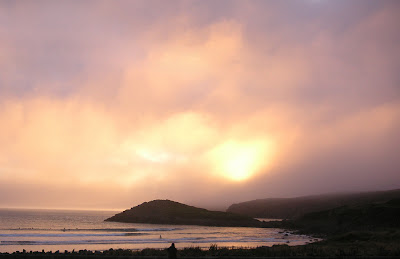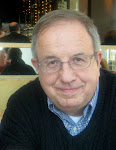
The earliest reference to choristers at St. Davids Cathedral was in 1132 during the reign of Richard II when there were two choirboys who were given instruction in grammar and singing.
In 1535, the number of choristers had risen to eight.
Thomas Tomkins, the famous church music composer, was born in St. Davids in 1572 and he became a chorister in the cathedral while his father was the organist and master of the choristers.
St. Davids Cathedral Choir, like most British cathedral choirs, was made up of boys singing the treble line and men singing the lower voice parts until, in the late 1960s, an epidemic of influenza in the run up to a live broadcast caused the cathedral organist, Peter Boorman, to take the prudent step of introducing girls to strengthen the treble line.
From that time until 1991 the cathedral choir included girls' and boys' voices mixed in a single line with the result that girls rather took over.
The main cathedral choir is unique in the United Kingdom in that its top line currently consists of girls aged 8-18.
The lay clerks of the choir work locally in a variety of occupations.
The choir sings at four services each week and has recorded several CDs, one of which sold more than one million copies in the US, and broadcast many times on BBC radio and television.
In addition to the Cathedral Choir, there is a separate Boys' Choir. The boys sing Evensong on Tuesdays and Fridays (fortnightly with the lay clerks).
The Junior Choir is open to boys and girls in Years 3-6 and currently has 25 singers from the primary schools of St. Davids, Croesgoch and Solva. The choir rehearses at 3:45 p.m. on Fridays and sings two services in the cathedral each term.
All three choirs benefit from a first-rate musical education.
For the Cathedral Choir and Boys' Choir there are other perks: they receive payment and the girls have a number of singing lessons each year with a professional singer, subsidized by the Dean and Chapter.
In 1991, the Cathedral Singers, an adult choir of mixed voices, was established. Under the expert direction of Simon Pearce (Assistant Organist) since 1998, the choir sings evensong every fortnight and occasionally deputizes for the cathedral choir during half term holidays.
Picture from the St. Davids Cathedral Web site.
In 1535, the number of choristers had risen to eight.
Thomas Tomkins, the famous church music composer, was born in St. Davids in 1572 and he became a chorister in the cathedral while his father was the organist and master of the choristers.
St. Davids Cathedral Choir, like most British cathedral choirs, was made up of boys singing the treble line and men singing the lower voice parts until, in the late 1960s, an epidemic of influenza in the run up to a live broadcast caused the cathedral organist, Peter Boorman, to take the prudent step of introducing girls to strengthen the treble line.
From that time until 1991 the cathedral choir included girls' and boys' voices mixed in a single line with the result that girls rather took over.
The main cathedral choir is unique in the United Kingdom in that its top line currently consists of girls aged 8-18.
The lay clerks of the choir work locally in a variety of occupations.
The choir sings at four services each week and has recorded several CDs, one of which sold more than one million copies in the US, and broadcast many times on BBC radio and television.
In addition to the Cathedral Choir, there is a separate Boys' Choir. The boys sing Evensong on Tuesdays and Fridays (fortnightly with the lay clerks).
The Junior Choir is open to boys and girls in Years 3-6 and currently has 25 singers from the primary schools of St. Davids, Croesgoch and Solva. The choir rehearses at 3:45 p.m. on Fridays and sings two services in the cathedral each term.
All three choirs benefit from a first-rate musical education.
For the Cathedral Choir and Boys' Choir there are other perks: they receive payment and the girls have a number of singing lessons each year with a professional singer, subsidized by the Dean and Chapter.
In 1991, the Cathedral Singers, an adult choir of mixed voices, was established. Under the expert direction of Simon Pearce (Assistant Organist) since 1998, the choir sings evensong every fortnight and occasionally deputizes for the cathedral choir during half term holidays.
Picture from the St. Davids Cathedral Web site.




















